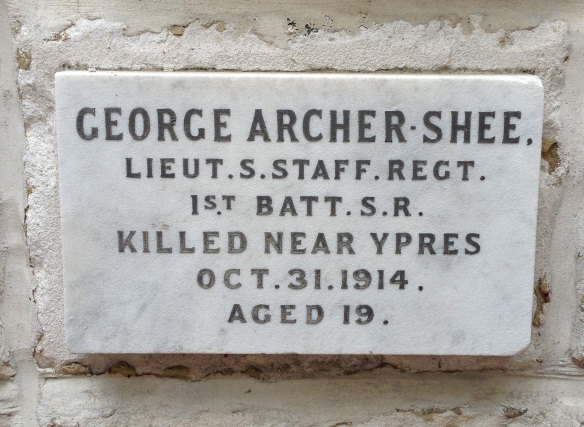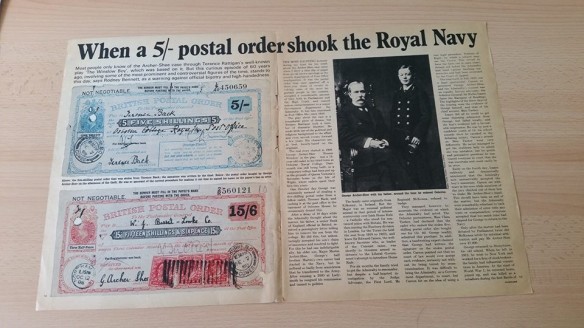On the Society of the Sacred Heart War Memorial at the University of Roehampton is the following inscription:
George Archer-Shee
Lieut. S. Staff. Regt.
1st Batt.S.R.
Killed near Ypres
Oct.31.1914
Aged 19.
George Archer-Shee (6 May 1895 – 31 October 1914) was a young Royal Navy cadet whose case of whether he stole a five shilling postal order ended up being decided in London’s High Court in 1910. The trial, which became a British cause célèbre, was the inspiration for the play The Winslow Boy by Terence Rattigan. Archer-Shee was successfully defended against the charges by the notable barrister, judge and politician from Ireland, Sir Edward Carson. Following the acquittal, the boy’s family were paid compensation in July 1911. Archer-Shee was commissioned in the British Army in 1913, and killed aged 19, at the First Battle of Ypres in October 1914.
The full story of George’s acquittal can be found here. But how did he come to be on the memorial, as he has no obvious connection to Roehampton?
George is honoured on the Society of the sacred Heart War Memorial as his half-sister, Winifrede Archer-Shee was at school at Roehampton, becoming a novice in 1908 and ultimately Mother Superior at Roehampton. In her memoirs, held in the Society’s archives, she is quoted as saying “This place [Roehampton] has always meant more to me than any other place”.
With thanks to Gilly King, University of Roehampton, who provided the information and photographs in this post.
Copies of The Winslow Boy play text and on CD are available through Wandsworth Libraries.



